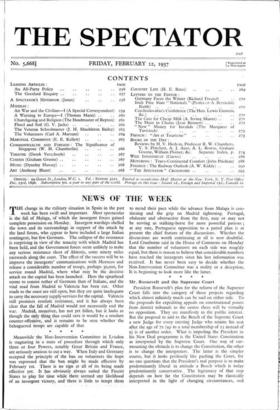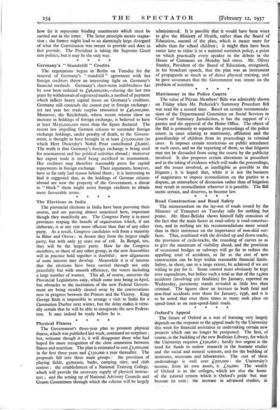Mr. Roosevelt and the Supreme Court President Roosevelt's plan for
the reform of the Supreme Court falls into the category of those projects regarding which almost infinitely much can be said on either side. To the proposals for expediting appeals on constitutional points from district tribunals to the centre there will be virtually no opposition. They are manifestly in the public interest. But the proposal to add to the Bench of the Supreme Court a new Judge for every existing Judge who retains his seat after the age of 70 (up to a total membership of 15 instead of 9) is of another order. What is impeding the President in his New Deal programme is the United States Constitution as interpreted by the Supreme Court. One way of sur- mounting the obstacle is to change the Constitution, the other is to change the interpreters. The latter is the simpler course, but it looks perilously like packing the Court, for no one questions that the President's real purpose is to make predominantly liberal in attitude a Bench which is today predominantly conservative. The legitimacy of that step depends on how far the Constitution may be elastically interpreted in the light of changing circumstances, and how far it represents binding enactments which must be carried out in the letter. The latter principle means stagna- tion ; the former might lead to an alarmingly large disregard of what the Constitution- was meant to provide-and does in fact provide. The President is taking the Supreme Court into politics, but it may be the only way.
* * * *















































